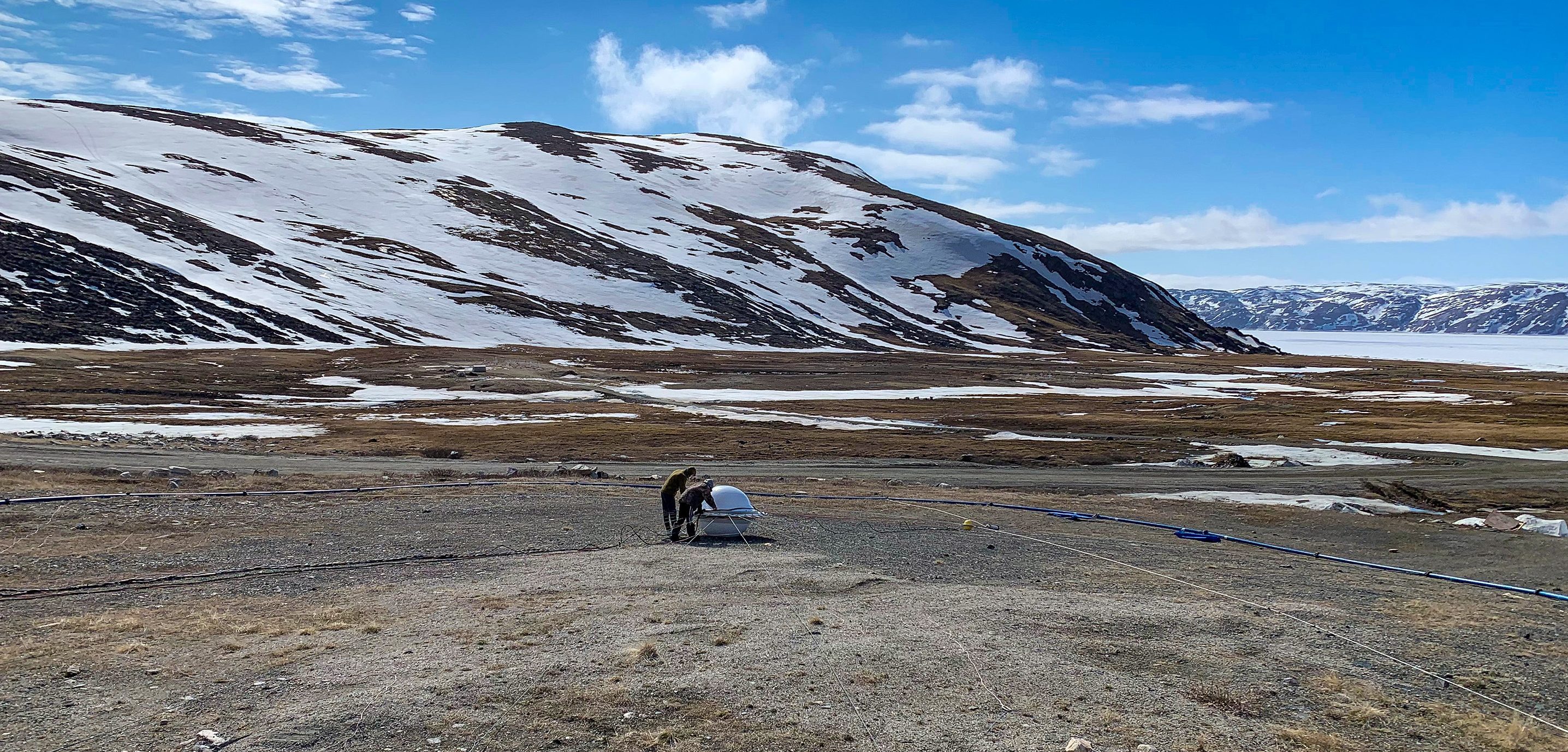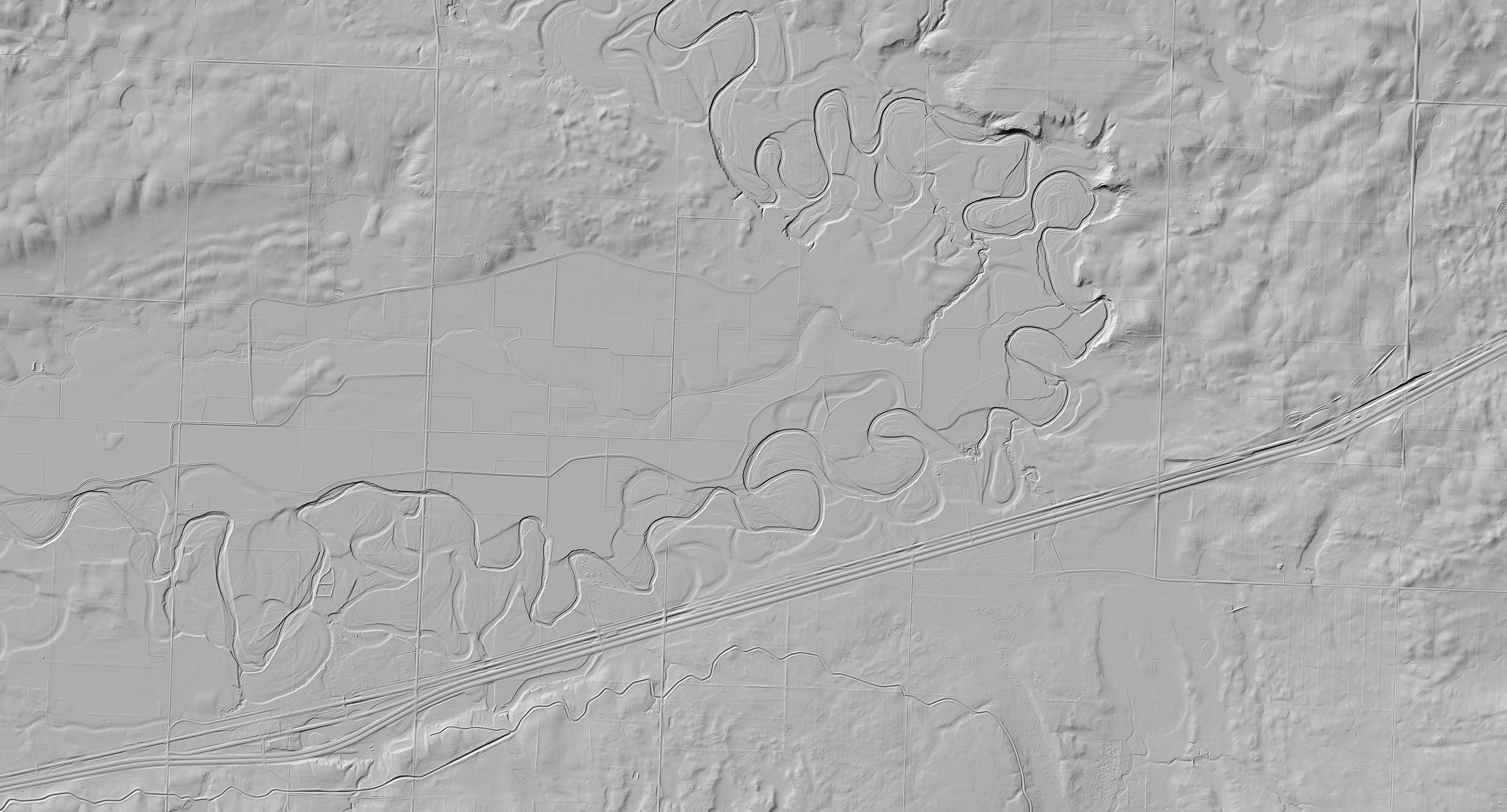The big tech quest to find the metals needed for the energy overhaul
In recent weeks, every day that the weather permitted, a helicopter contracted by KoBold Metals flew over a remote part of northern Quebec carrying some unusual cargo.
A 115-foot-wide copper coil dangled from the belly of the craft, sending electromagnetic waves into the earth and creating currents in rocks deep underground. Any good electrical conductors sent telltale signals back to a receiver coil, suggesting that the rocks might contain valuable deposits of nickel and cobalt-metals used in the batteries powering cell phones, laptops, and electric cars.
After the pilot finished scanning a swath of land-on a good day, the helicopter will cover more than 100 miles-the data was transmitted via satellite to KoBold scientists working in offices thousands of miles away. These researchers plugged the new survey data into machine-learning models, which combined it with reams of other data the company has gathered to improve understanding of the region's geology. Finally, they fed all this information into an artificial-intelligence system KoBold developed in partnership with Stanford University. The system draws on vast computational power to advise the team on the best places to survey next.
Using this high-tech array of software tools, the San Francisco-based mineral exploration company, backed by Bill Gates and Jeff Bezos, can change its airborne survey plans from day to day to more quickly home in on promising places to drill.
It's a far cry from how geologists have traditionally hunted for mineral deposits, which amounts to collecting field data and analyzing it when the exploration season is over.
Where conventional methods relied wholly on human interpretation, these days data science and machine learning are becoming a bigger part of the effort to find the next big payday underground. Recognizing that the metals underpinning modern technology are getting harder to find as the clean-energy sector's appetite for them grows exponentially, Silicon Valley investors are betting that companies like KoBold can help the mining business keep up, accelerating the discovery of new ores and driving down its costs.
Whether or not that hunch is correct, experts say the involvement of major tech figures could draw attention to the lack of investment in new mines and potentially attract needed funding for startups hoping to harvest metals in a more environmentally and socially responsible way.
When people think about electric vehicles, it's easy to forget about the raw materials that feed into this shiny stuff we see in the showroom," says Kwasi Ampofo, a mining-sector analyst at the energy research firm BloombergNEF.
Harder to findDemand for metals and minerals like lithium, cobalt, graphite, and nickel, all used in batteries powering electric vehicles and the grid, is expected to surge in the coming years. A May report by the International Energy Agency found that deploying clean-energy technologies at the pace needed to prevent 2 C of global warming will increase demand for minerals used in energy storage more than thirtyfold by 2040.
But the mining sector isn't keeping pace. It can take more than a decade to bring new mines online once a company secures mineral rights and permits. Discovering the best place to dig a hole in the ground can take even longer: with most of the easily identifiable, high-grade ore bodies already found and investment in exploration declining, new mineral deposits are getting harder to spot. A commonly stated rule of thumb in the field is that only one out of 100 sites evaluated will turn up a deposit that can profitably be mined. But some experts think it's closer to one out of 1,000.
Data science tools like machine learning, in which algorithms are trained to sift through massive data sets and spot patterns, have the potential to greatly speed up the discovery process. Increasingly, mining companies are using these systems to analyze data sets on geology, geochemistry, and geophysics all at once, in hopes of spotting correlations that would not be apparent to a human.
By combining this approach with the AI decision-making tool developed with Stanford, KoBold is betting it can boost discovery rates by a factor of 20, says Josh Goldman, the company's chief technology officer. KoBold says the approach will also reduce the environmental impact of exploration because it will mean fewer wasted drill holes in the ground.
Unlike several other data science companies that focus on mining, KoBold isn't selling a service. Instead, it's developing software tools to guide its own exploratory work, which means KoBold gets to decide where prospecting will occur. And it claims it will work only in areas where it can do so ethically and with community buy-in.
 KoBold workers in the field preparing for an aerial survey.KOBOLD
KoBold workers in the field preparing for an aerial survey.KOBOLDWhile it remains to be seen whether KoBold can deliver on the promises of far better discovery rates and cleaner mining operations, the sales pitch has resonated with investors. The company, which was founded in 2018 and employs roughly two dozen data scientists and geologists, has raised tens of millions of dollars from Breakthrough Energy Ventures, a climate technology fund that counts Bill Gates, Jeff Bezos, and Richard Branson among its investors and board members, as well as Andreessen Horowitz, a leading Silicon Valley venture capital firm. In early 2021, Norwegian state oil company Equinor took a stake in KoBold and pledged additional funding through its venture capital arm, which invests in companies working to enable a low-carbon future.
We invested in KoBold Metals to help solve the critical problem of finding and developing the vast quantities of the key battery materials needed to electrify the planet," says Carmichael Roberts, who serves on the investment committee at Breakthrough Energy Ventures. Possible shortages of both cobalt and nickel are anticipated within the next decade. Cobalt and nickel mining also share a troubled history of environmental and human rights abuses, placing pressure on major tech firms to find more ethical sources.
The company has two publicly disclosed mining claims, in Quebec and northern Saskatchewan, where it is conducting exploratory fieldwork from the ground and air this summer. It is also working at a third undisclosed property in Canada and at unspecified sites in Zambia and western Australia, Goldman says.
Part of the reason the company has focused its initial efforts on Canada is that the nation has large amounts of survey data in the public domain, including narrative field reports, timeworn geologic maps, geochemical data on drill hole samples, airborne magnetic and electromagnetic survey data, lidar readings, and satellite imagery spanning many decades of exploration.
We have a system where we can ingest all this data and store it in standard formats, quality-control all of the data, make it searchable, and be able to programmatically access it," Goldman says.
High-tech momentumOnce it has compiled all the available information for a site, KoBold's team explores the data using machine learning. The company might, for instance, build a model to predict which parts of ore deposits have the highest concentrations of cobalt, or create a new geologic map of a region showing all the different rock types and fault structures. It can add new data to these models as it's collected, allowing KoBold to adaptively change its exploration strategy almost in real time," Goldman says.
 Canada makes data sets and other information publicly available, such as this lidar-generated image of Saskatchewan.GOVERNMENT OF CANADA
Canada makes data sets and other information publicly available, such as this lidar-generated image of Saskatchewan.GOVERNMENT OF CANADAKoBold has already used insights from machine-learning models to acquire its Canadian mining claims and develop its field programs. Its partnership with Stanford's Center for Earth Resources Forecasting, under way since February, adds an additional layer of analytics to the mix in the form of an AI decision agent" that can map out an entire exploration plan.
Stanford geoscientist Jef Caers, who is overseeing the collaboration, explains that this digital decision-maker quantifies the uncertainty in KoBold's model results and then designs a data collection plan to sequentially reduce that uncertainty. Like a chess player trying to win a game in as few moves as possible, the AI will aim to help KoBold reach a decision about a prospect with minimal wasted effort-whether that decision is to drill in a particular spot or walk away.
Guy Desharnais, an exploration geologist who has written and lectured about mining applications for machine learning, says there is a huge amount of value" in using these sorts of tools to compile and analyze many data sets at once. But Desharnais also warns there are a lot of caveats" about whether machine learning can make intuitive leaps or intelligent decisions.
Geologic data is often very patchy both in space and time, and this patchiness, along with inconsistent data quality, can cause models to latch onto false signals or make incorrect inferences. What's more, because high-quality ore bodies are rare, geologists often don't have many positive examples of what they are looking for in order to train an algorithm to detect similar ones.
At the end of the day, the real work of finding the deposit is going to be a human geologist who's going to take those tools to enhance their capability," Desharnais says.
It can be hard to tell if machine learning or other AI tools are helping humans discover things they wouldn't find on their own, says Holly Bridgwater, an exploration geologist at Unearthed, an Australian organization that hosts hackathons and other efforts to promote innovation in the resources sector. Bridgwater explains that only a select few potential mining targets are ever tested, because the process is so expensive. Getting that positive feedback loop of what actually works is a challenge," she says.
But while Bridgwater suspects it will be hard for KoBold to prove that its tools are actually improving mineral discovery rates twentyfold, she feels that the company's goal was reasonable. I think it's highly plausible," she says, because our hit rate is so bad."
Ampofo, the BloombergNEF mining analyst, says that the symbolism of a well-funded tech startup entering the mining space may be more significant than any battery metals KoBold discovers.
Desharnais agrees.
I think the biggest impact a company like KoBold will have is that they will draw attention to the lack of investment," he says. They will be able to raise money in sources where other people have not raised money-to bring out new data, or update old data and actually find new things."